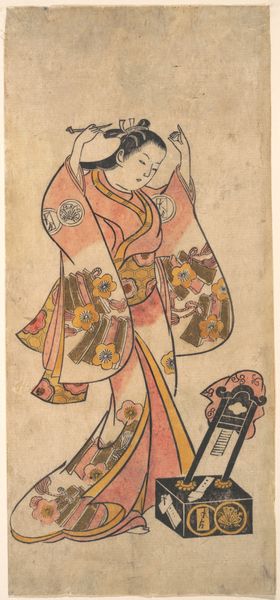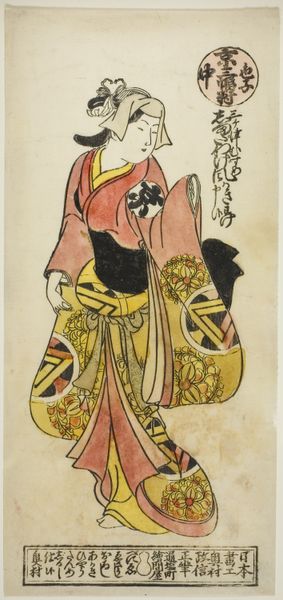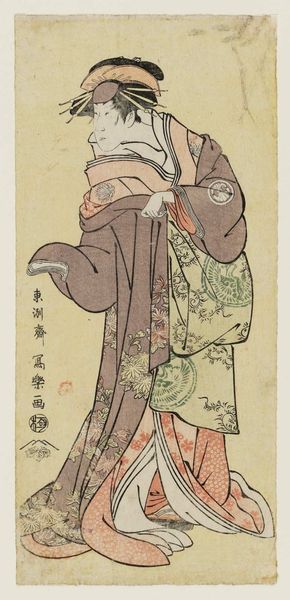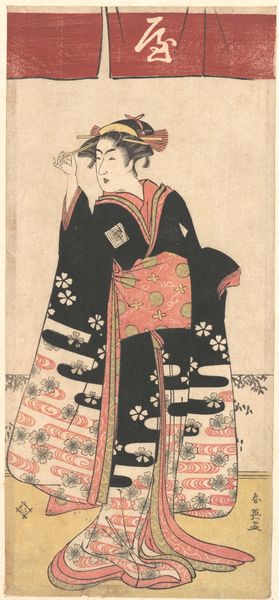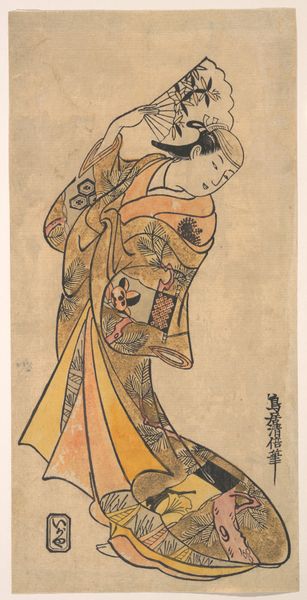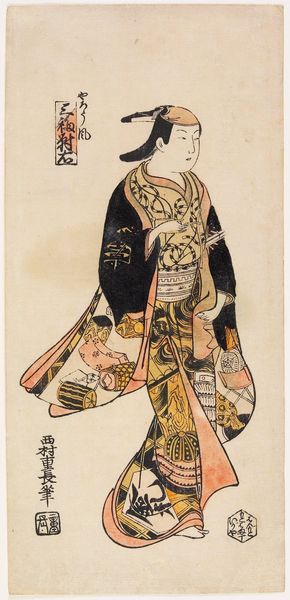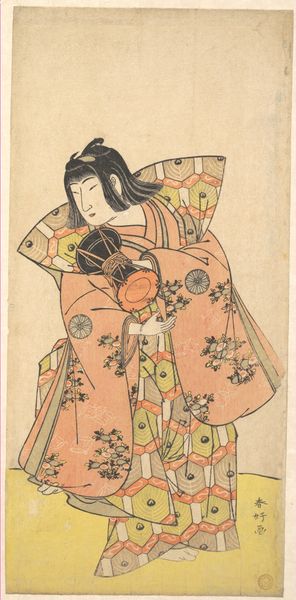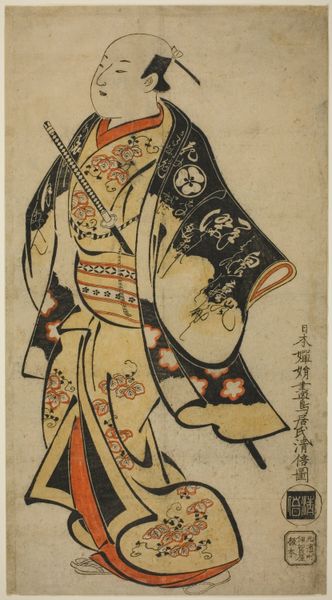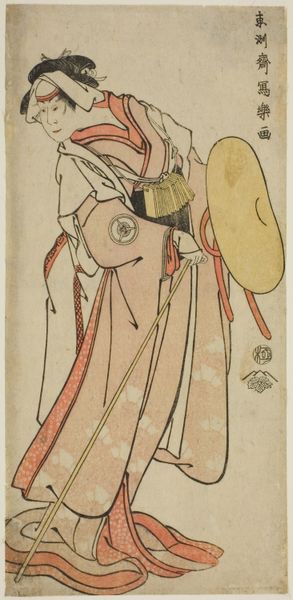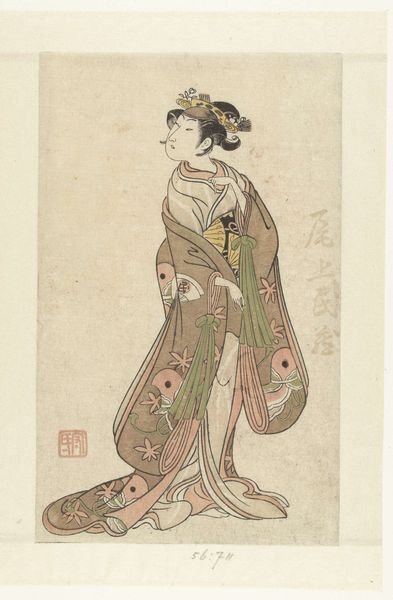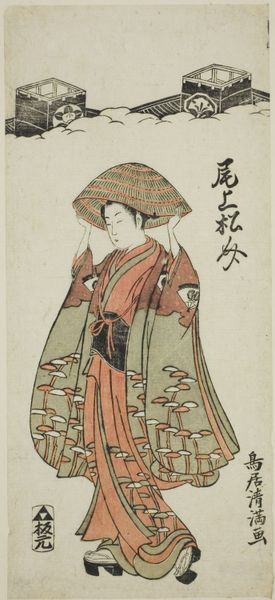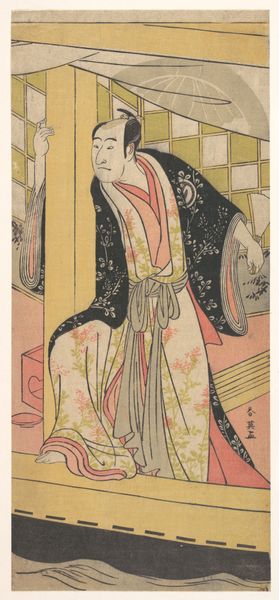
Portrait of Sanjō Kantarō in the Female Role of Yaoya Oshichi in the Play "Fuji no Takane" ("The High Peak of Mount Fuji") 1720 - 1750
0:00
0:00
#
portrait
# print
#
asian-art
#
ukiyo-e
#
japan
Dimensions: H. 11 3/8 in. (28.9 cm); W. 6 in. (15.2 cm)
Copyright: Public Domain
Editor: This print, created between 1720 and 1750 by Torii Kiyomasu II, depicts "Portrait of Sanjō Kantarō in the Female Role of Yaoya Oshichi." I’m immediately drawn to the vibrant colors and how they pop against the neutral background. How do you interpret this work, especially with its theatrical context? Curator: Indeed! Notice how the actor, Sanjō Kantarō, embodying Oshichi, isn't just a representation of a person, but of a well-known tragic character, a kind of cultural shorthand for doomed love. The "ukiyo-e," the floating world genre, captures fleeting moments and cultural memory simultaneously. What symbols do you notice? Editor: Well, the flowers on the kimono are quite prominent, and there's what looks like some kind of writing or emblems on the sleeves. Also, is that a ladder? Curator: Precisely! Those stylized emblems are likely connected to the actor's family or the play itself, acting as markers of identity and lineage within the theatrical world. And the ladder connects directly to the Oshichi’s narrative of arson to meet her lover, it’s a very pointed inclusion and suggests her character. What do you think of how these recognizable symbols contribute to the overall impact? Editor: So, the emblems tell a story, and the ladder visually triggers her history in the viewer's mind. Seeing a male actor in a female role now makes more sense as a layer in which to further read the artwork, in terms of gender and performance in 18th-century Japan. Curator: Exactly! Ukiyo-e prints aren't merely decorative; they actively engage with the audience's pre-existing cultural knowledge, layered symbolism to reflect a rich cultural context. Editor: This makes me look at the work as less of a pretty picture and more of an intersection of different narratives being performed all at once! Thank you. Curator: My pleasure. Considering its symbolism transforms our experience and reveals an image of so much more than a performer arranging their hair.
Comments
No comments
Be the first to comment and join the conversation on the ultimate creative platform.
